How to grow pak choi: expert planting, growing and care tips
Find out how to grow pak choi for months of stylish, inventive vegetables to adorn oriental salads, soups and stir-fries

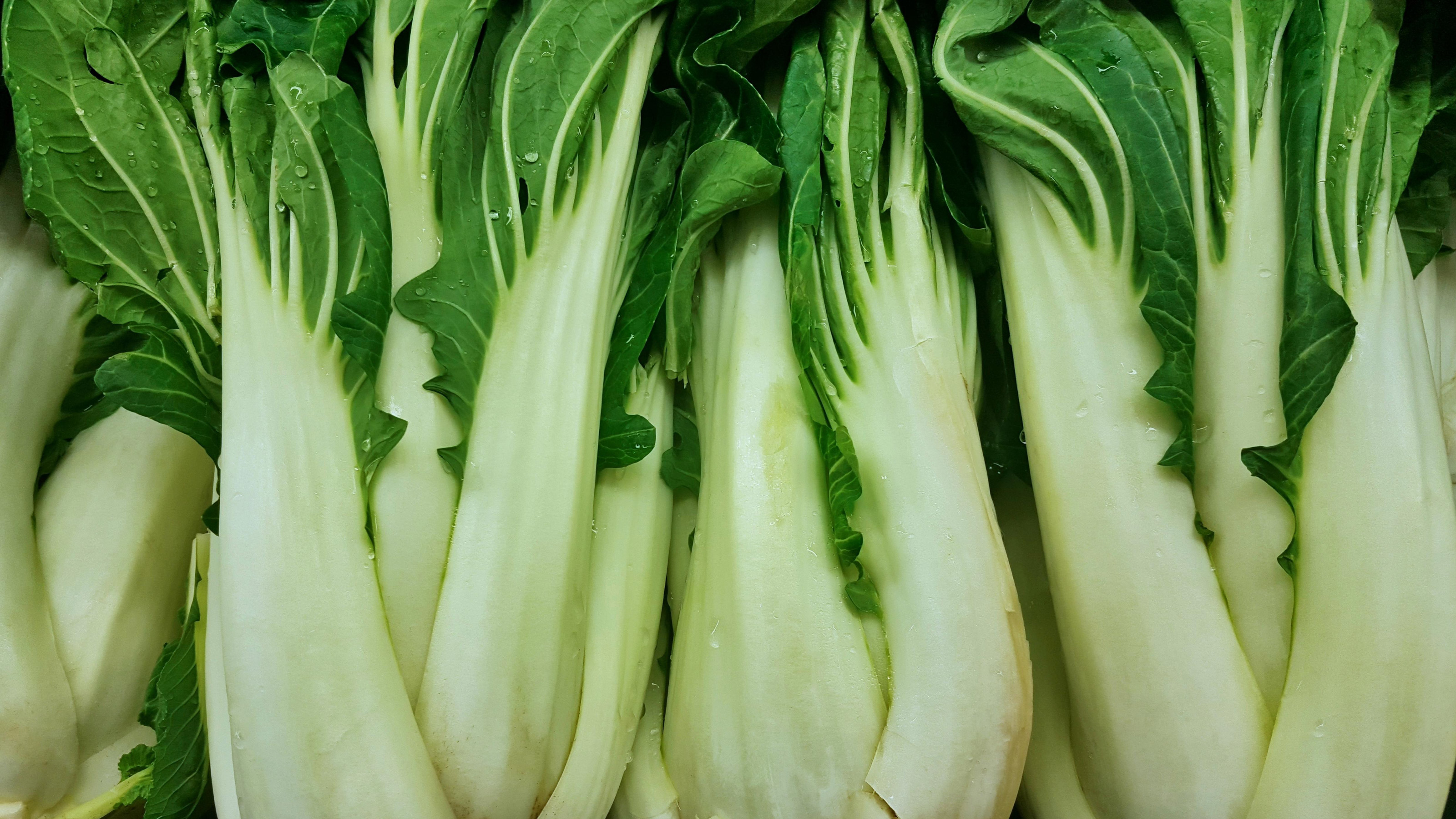
Learning how to grow pak choi is a chance to add some oriental bite to your veggie growing season. These plump-bodied, glossy-leaved peppery crops lend a flourish of exotic kudos to all manner of stir-fries, soups, salads and steamed dishes – and the great news for gardeners is they are as easy to grow as they are versatile.
Quick-cooking darling of Asian cuisine, hale and hearty pak choi (also known as Chinese cabbage, bok choy and soup spoon) creates an extra dimension to your kitchen garden and brings a lot of style points to the table. The fact that it is so easy to grow and care for makes it irresistible. Bursting with vitamins C and K, fibre, zinc, folic acid and antioxidants, pak choi (Brassica rapa var. chinensis) is juicy, crisp, fast maturing and capable of cropping repeatedly and for a long harvest season.
All in all, this bold and luscious cropper is one of the most rewarding and hard-working vegetables you can grow. You can cultivate white-stemmed and green-stemmed breeds of pak choi (like ‘White Canton’ and ‘Shanghai’), and even red and purple leaved varieties like ‘Rubi’. Small garden owners can try dwarf types such as ‘Mini Bok’ and ‘Extra Dwarf’, and those after something bigger and higher yielding can plump for the likes of ‘Joi Choi’ and ‘Glacier’.
Pak choi has a strong tradition in the Far East and has been enjoyed for 1500 years – but for many gardeners this might be your first foray into the delights of this plump and leafy cabbage with the bulbous bottom. However, we promise that it won’t be long before you’re hooked. Here we show you how to get started so you too can make the most of this extraordinary Asian veggie.
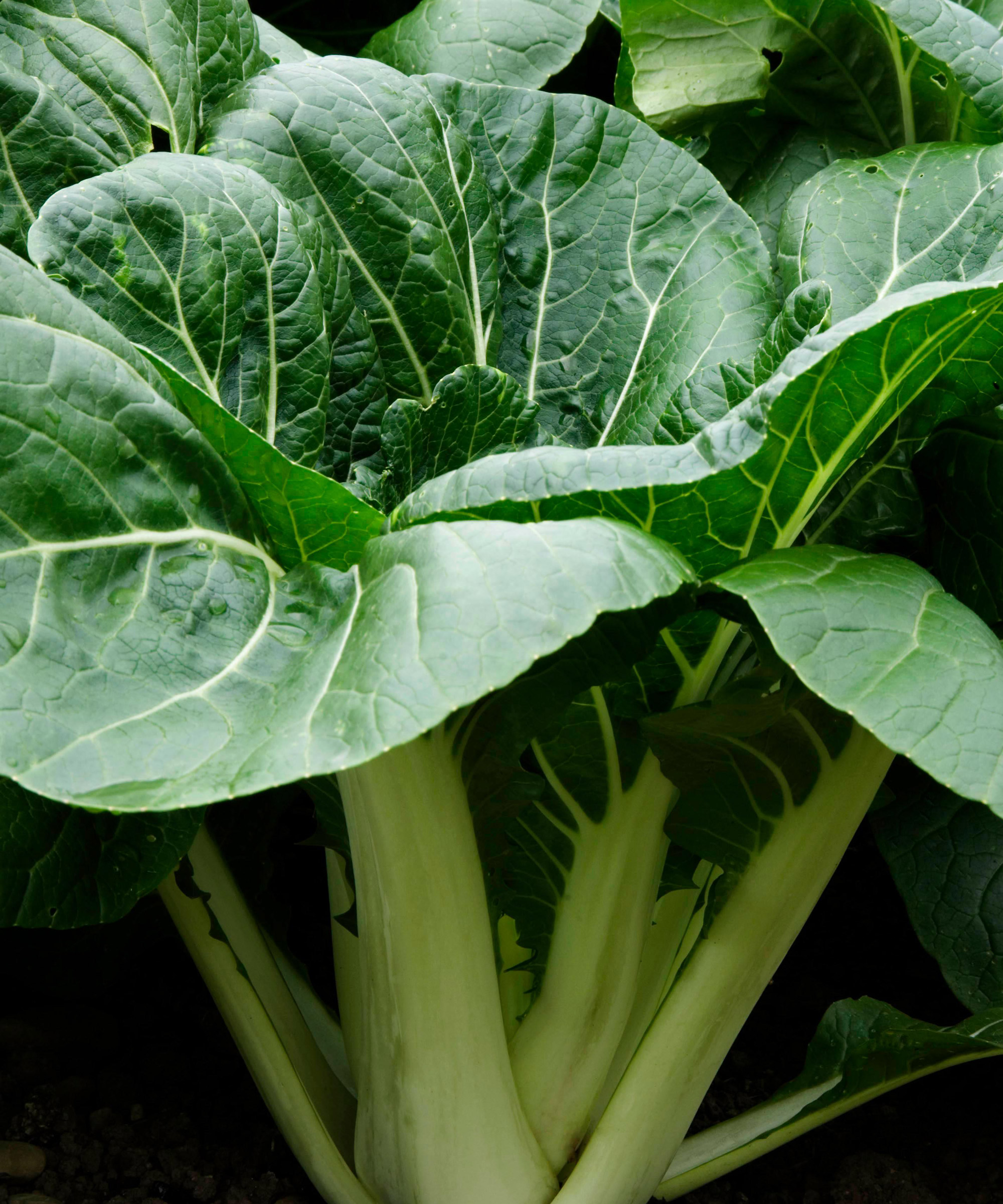
How to grow pak choi: where to start
The trick with knowing how to grow pak choi is to keep young and developing crops in partial shade (with six-eight hours of direct sunshine). Choose a sandy, well-draining loam soil for young plants; get familiar with your soil types and you should be fine. Ideally, you want soil to be moisture-retentive. Pak choi, as with most brassicas, love cool, moist conditions. If you already know how to grow cabbage or any winter brassicas like sprouting, kale or cauliflower, there are no unwelcome surprises in store with pak choi.
Mild climates are ideal, although anywhere in USDA zones 3-11 is fine, so pretty much anyone should find a spot that works. Just keep exposure to hot weather to a minimum. Pak choi is prone to bolting if subject to extended periods of heat. Bolting is where the plants go to seed prematurely, as Chris Bonnett of GardeningExpress.co.uk points out. Once this happens, it can have dire consequences for crops. To avoid this, keep your pak choi well watered – and look for one of the many bolt-resistant breeds that are now available to grow.
Pak choi are some of the best vegetables to grow in raised beds and do very well in mixed veg borders. Just take care not to grow in the same spot where other cabbage crops were growing the year before, as this can lead to a drop in productivity and crop health. Crop rotation is a smart way of dodging such issues when deciding on a place for your pak choi.

When to plant pak choi
Pak choi is a cool weather plant, and as we have pointed out it can bolt if exposed to extended periods of heat. And once it bolts, it stops putting energy into edible stalk and leaf development. So while it is a quick maturing crop, it is advised to either start indoors in mid to late spring where you can regulate heat in a more controlled environment – or wait until slightly later (early to mid summer) if sowing directly outdoors. As a general rule, many gardeners prefer to sow pak choi after the longest day of the year.
As Chris Bonnett explains, pak choi is hardy, thrives in cooler conditions and continues to grow well into fall. So while you can sow from mid spring indoors, you can start as late as late summer for young harvests just weeks later. Just bear in mind that, depending on when you start, you must keep crops covered correctly with very early and very late sowings. This is unlikely to be a problem if you use a greenhouse for starting crops in spring. Later into the fall, you can protect young crops outdoors from rapid drops in temperature with DIY cold frames, cloches and fleece tents.
Bob Flowerdew, organic vegetable expert for Amateur Gardening, advises sowing in batches every few weeks from high summer into early fall. You can push these timings a little further if you are sowing pak choi for baby leaves rather than fully formed bulbous heads. Chinese cabbage thrives in temperatures from 45-75˚F (7-23˚C) and matures rapidly. Planting later is also handy as it coincides with that point when a lot of other crops on the plot are reaching harvest, allowing you to make the most of gaps.
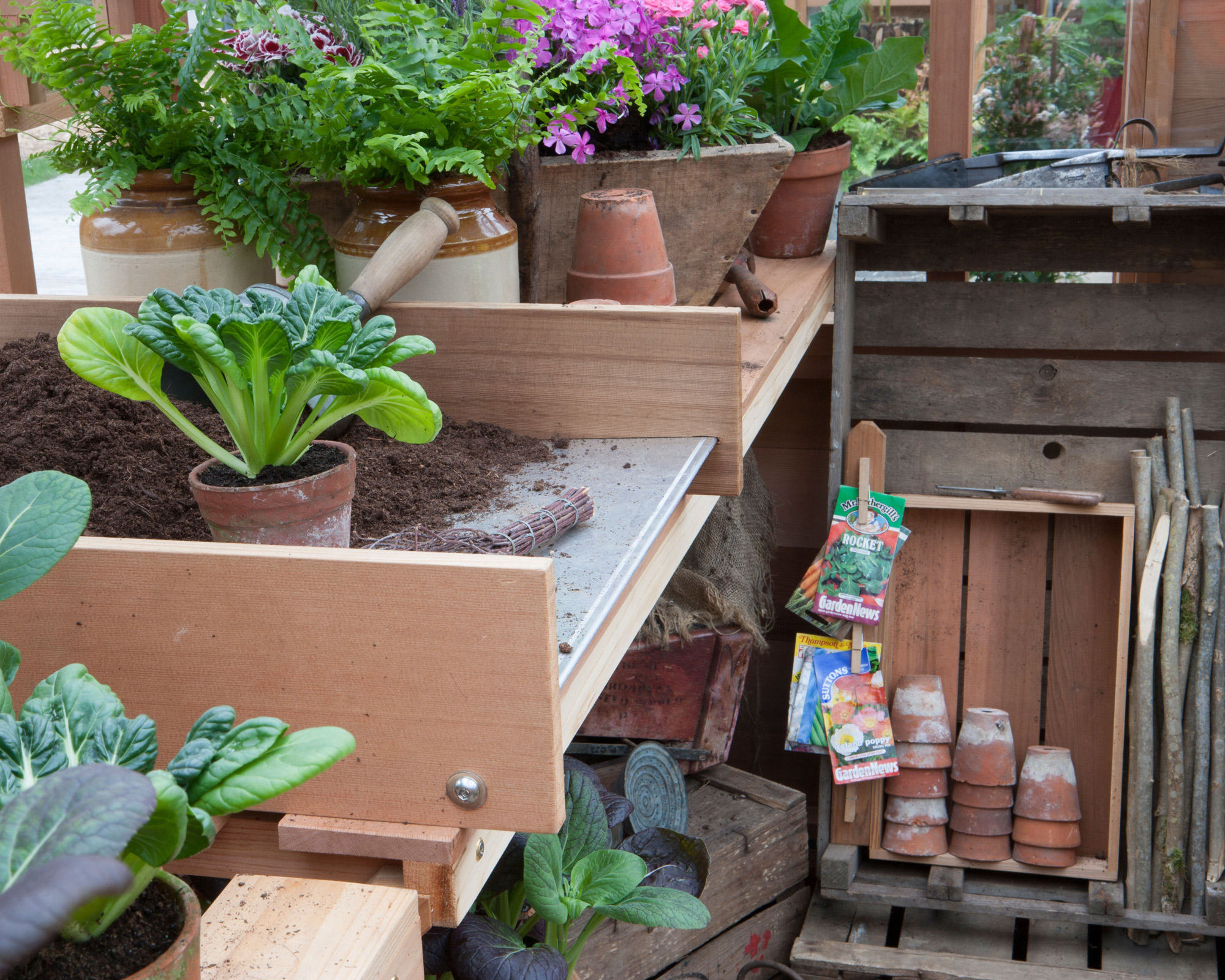
How to grow pak choi from seed
Pak choi germinate and develop quickly as long as the soil (or compost) is rich and moisture-retentive. If you think your soil needs a boost before sowing or planting, Chris Bonnett recommends adding plenty of well-aged compost. ‘This acts as a great natural fertilizer and will ensure crops are lush and healthy,' says Chris.
It’s also wise to sow little and often at regular intervals for as long as you can to avoid gluts.
- Starting undercover in seed trays or modules of moist compost, sow pak choi seed half an inch (1cm) deep. Seeds should take five-seven days to germinate. Thin out to one per module and keep moist. You can transplant seedlings out after a few weeks when they are 2in (5cm) tall.
- Making planting holes with a dibber, plant seedlings at least 10in (25cm) apart, and preferably 14in (35cm) each way. Firm in gently and water well. Once planted in your raised garden bed or veg border, a light mulch will retain moisture. Then keep watering to help prevent bolting. It’s also wise to cover the crop with horticultural fleece to protect from pests like flea beetles.
- If it’s warm enough for direct sowing, grab your best garden rake and prepare the ground. Broadcast seeds half an inch (1cm) deep into moist earth. Make spacings 10-14in (25-35cm) apart; closer for dwarf types or baby leaves, further for large breeds or mature bulbs. Cover with a thin layer of soil and water well. Thin after three weeks. Continue sowing in batches until the fall. Cover with fleece to protect from pests.
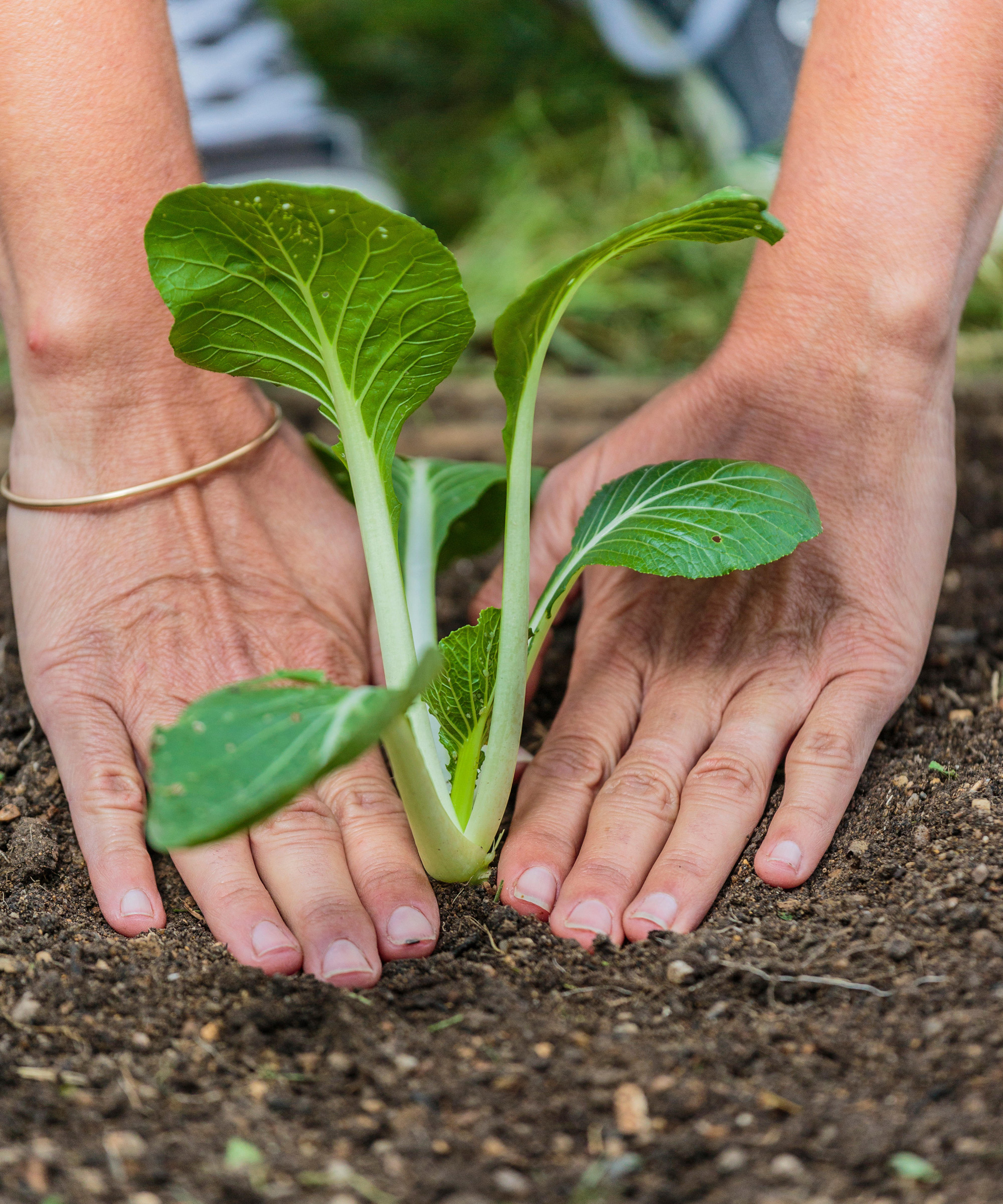
How to grow pak choi in pots
Thanks to their shallow rooting nature, pak choi is well suited to container gardening ideas if you adhere to a few basic principles. This can be individual pots or sizable window boxes or troughs for group plantings.
Choose a pot 10in (25cm) wide and 6in (15cm) deep with good drainage holes (10in/25cm for larger breeds). Use a crumbly potting mix that is moisture retentive with a 6-7 pH. Sow seeds half an inch (1cm) deep and an inch (2.5cm) apart. Thin at three weeks and pot on when 2in (5cm) tall.
Start indoors before the last frost, or sow out from mid summer onwards. If you’re growing vegetables in pots, you can plant in a greenhouse or take advantage of cold frames, polytunnels and cloches to extend the season into the fall. Make sure containers are moved out once nighttime temperatures rise above 10˚C (50˚F).
Make sure growing individual dwarf plants are 4in (10cm) apart, and larger breeds have about 8in (20cm) between them. As with standard plantings, give your pak choi at least some shade every day. And keep watering plants, particularly in hot, dry spells. Add a balanced liquid fertilizer or manure tea at the time of planting and again mid-summer. And if you have room in your containers, grow with sage or rosemary.
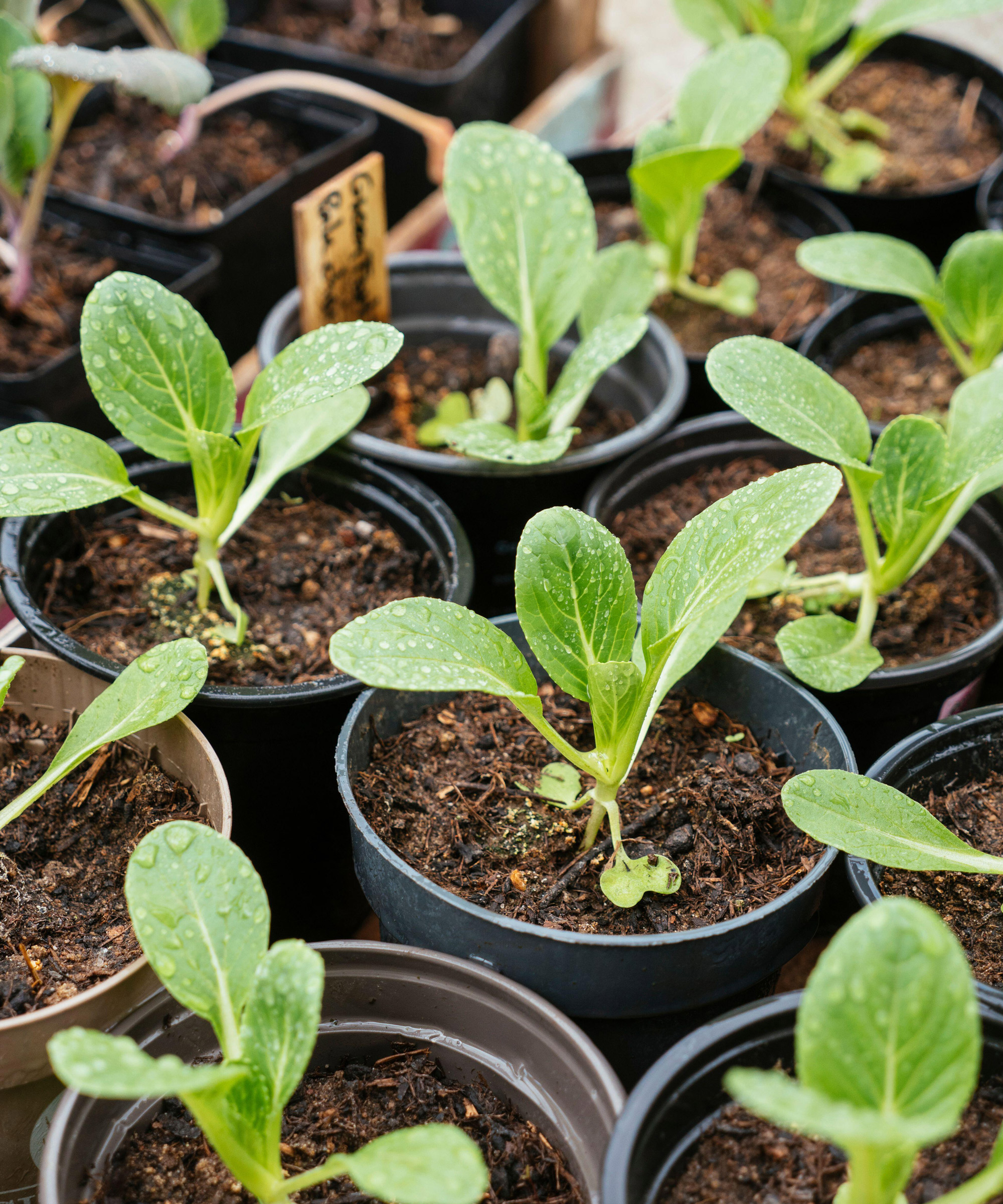
Pak choi care tips
Once your plants are in the ground or established in pots, pak choi undemanding, fast maturing and highly unlikely to let you down. The key areas of attention are watering and balanced shade with partial sunshine (six hours of sun a day is ample, but otherwise keep plants cool). Get these primary needs met, and your Chinese cabbages should remain free from bolting and will hopefully soon develop thick, lush glossy leaves and juicy, crunchy bases.
In terms of watering, a little and often is better than intermittent drenching. Pak choi have shallow roots, so a little goes a long way. A balanced liquid feed can also help boost the flavor of your crops.
After planting, remember to thin pak choi plants at the three-week mark to prevent overcrowding, allowing more room for mature plants (12-14in/30-35cm) than for baby leaf harvests (4in/10cm). And depending on when you plant, help protect young plants from bugs by covering with horticultural fleece or fine netting.
A good mulching will preserve moisture levels, particularly in summer. A fresh side dressing with compost can give your plants a moisture boost mid-season. Other than this, pak choi plants are very easy to look after.

What to grow with pak choi
As you learn how to grow pak choi and realize how easy they are to care for and cultivate, it’s worth giving some thought to other cropping groupings that can help you get even more from your harvests. A basic understanding of companion planting will help you enhance the potential of all plants in a particular grouping. Try boosting the health, growth and taste of your pak choi with one or more of the following herbs and vegetables:
- If you grow thyme, celery or borage, plant pak choi near them as they repel cabbage worms. Thyme can also repel flea beetles and aphids.
- Pak choi work well in conjunction with onions, which help deter cabbage maggots as well as aphids, slugs, spider mites and whitefly.
- Growing some rosemary, sage or nasturtiums near your pak choi helps to keep flea beetles and aphids at bay.
- It is one of the best companion plants for potatoes – spuds need plenty of root space and shallow-rooted pak choi is less demanding.
- Cultivating some mint or chamomile alongside can improve the flavor of your pak choi.
Don’t plant near dill (attracts cabbage worms), tomatoes (vulnerable to stunted growth) or heavy-feeding artichokes or courgettes. Also don’t plant with Brussels sprouts, cabbage, broccoli or cauliflower, which have similar needs and are susceptible to the same pests.
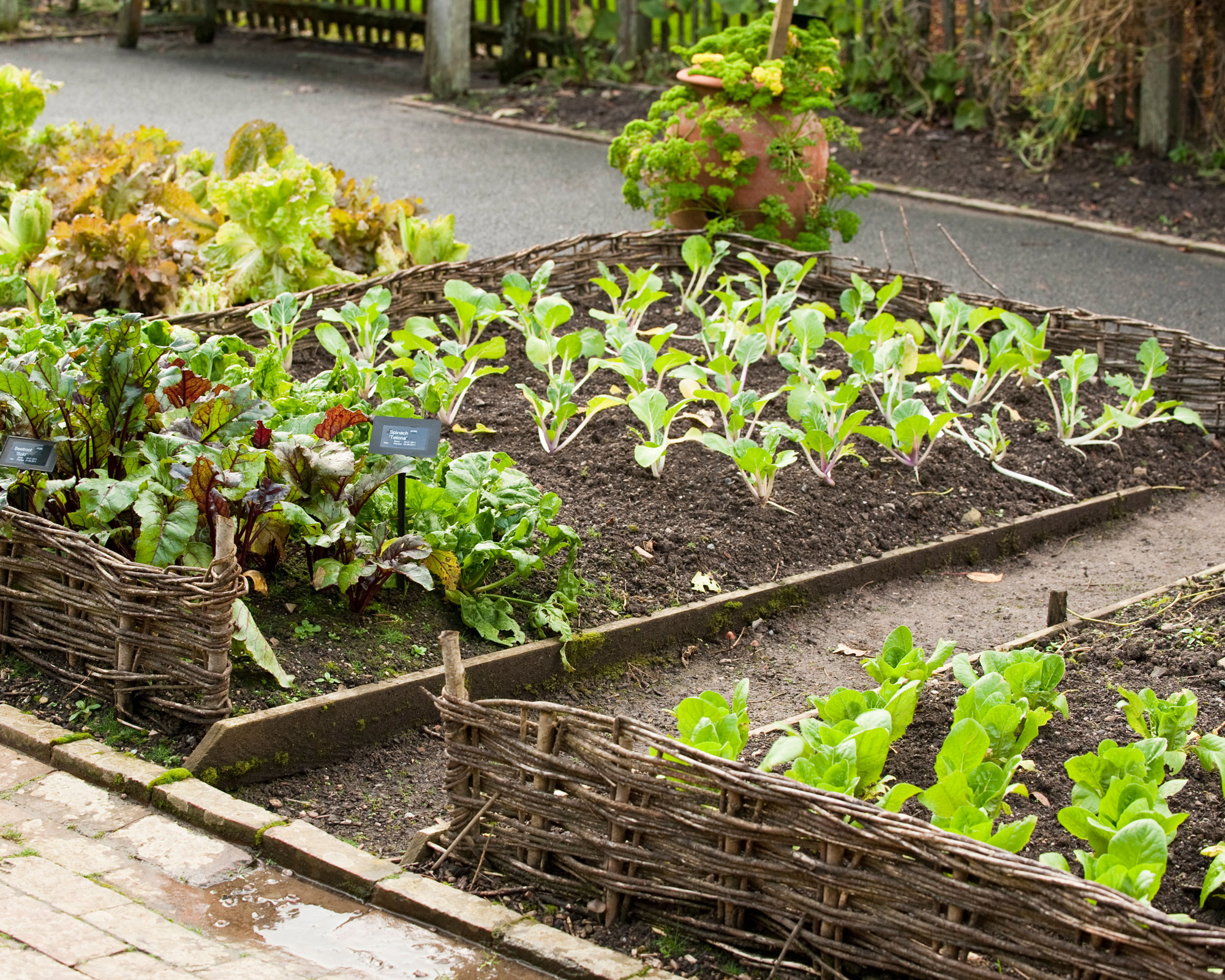
Pak choi problems and how to solve them
Although learning how to grow pak choi is a quick way to cultivate delicious and nutritious crops, it will attract pests. Luckily, depending on when you grow your Chinese cabbage, you can dodge a few and protect against others.
'Growing crops in late summer and early fall means pests are beginning to die off,' says Chris Bonnett. 'And if you do grow pak choi earlier, you can protect it with a row cover,' he adds.
Here are the main issues to watch out for to keep pak choi in tip-top condition.
- Cabbage root fly: Signs of trouble include small flies or maggots, and tunnels or holes on the roots. Protect plants with 4in (10cm) mats around each stem, with a slit to secure in place. This stops the root fly from taking hold.
- Flea beetle: seedlings are vulnerable to this pest. Look for leaves filled with small holes and brown areas of damage. If you want to know how to get rid of flea beetles, grow plants under a protective fleece and keep soil moist.
- Powdery mildew: presenting as a powdery dust over the surface of the leaf. Eventually, leaves become stunted, shrivel and die. Prevent this pest by keeping soil moist and ensure growing conditions are cool.
There are other pests such as aphids, cabbage whitefly, caterpillars, yellow virus, clubroot, black rot, slugs, snails and birds. But because pak choi is so fast growing, it is possible to avoid most issues with frequent watering, protective mesh, disease-resistant breeds and companion planting.
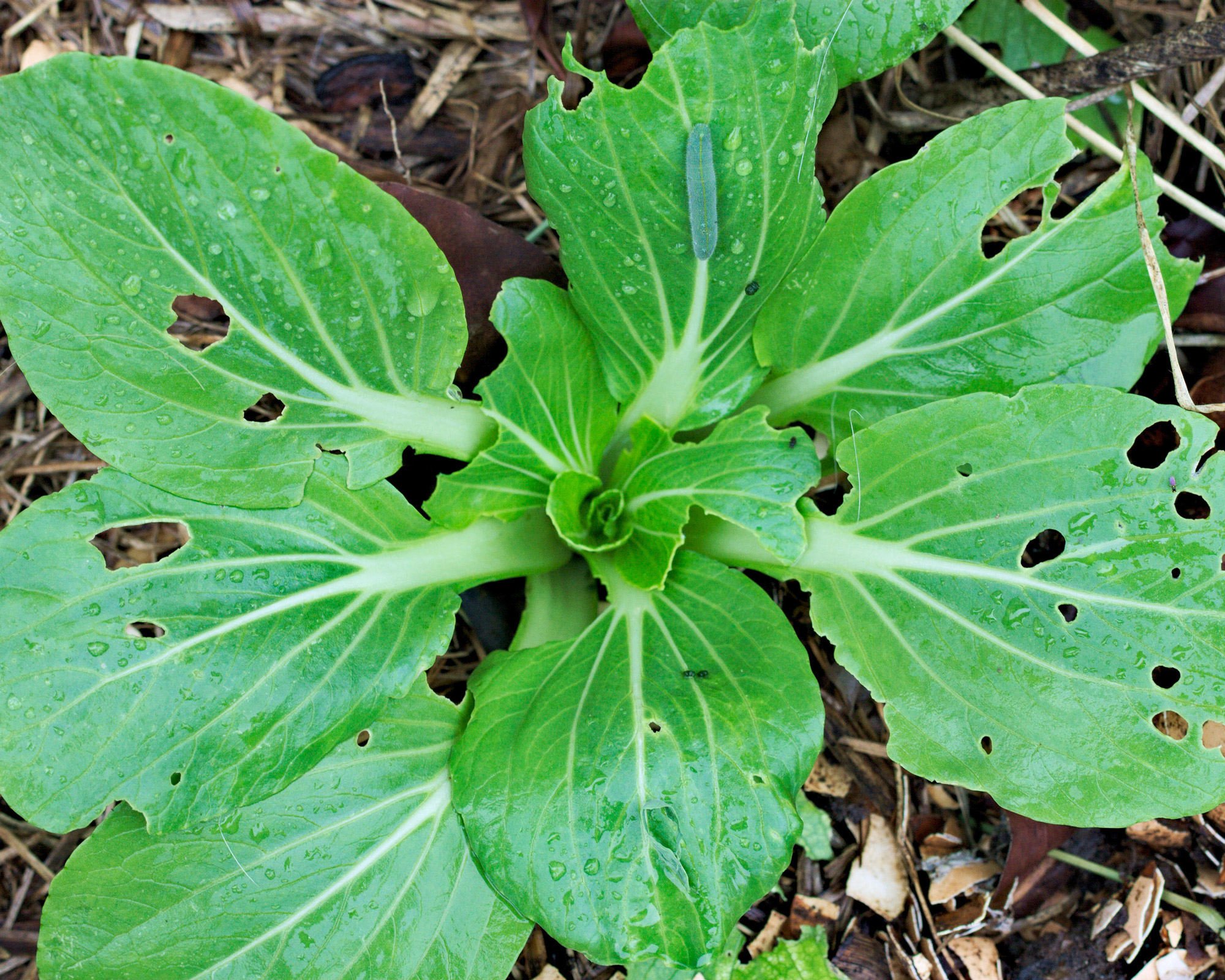
When to harvest pak choi
You can harvest succulent fleshy parcels (or hearts) of leafy rosettes in six-eight weeks (and four weeks for salad leaves). Once leaves are lush and glossy and stalks are thick and plump, they are ripe for picking; this can be at any point once plants are 5-6in (12-15cm) high. You needn’t worry about common vegetable harvesting mistakes like picking too soon or too late.
When harvesting a Chinese cabbage, slice the whole heart at soil level. Alternatively, cut 1in (2.5cm) above ground level and it will resprout. If you just harvest the outer leaves for a salad, you can be sure of a flurry of further leaves soon after.
Depending on the variety, you can continue to harvest up to the end of summer and well into the fall. If you have made continuous sowings, you will be able to enjoy a constant supply of fresh pak choi bundles until mid fall – and beyond for baby leaves.
Pick early in the morning for the freshest, most luscious harvests. And if your plants grow broccoli-style florets, count yourself lucky – you’ve grown more tasty edibles.

Can I grow pak choi indoors?
Pak choi do best with plenty of nitrogen-rich soil (6-7 pH) and lots of sunshine (and shade). However, there is nothing to say you can’t replicate these growing conditions in a greenhouse or polytunnel. It will, of course, depend on the types of greenhouse and undercover sheeting you have in place. The crucial consideration is a regular temperature somewhere between 55-70˚F (13-20˚C) – not too hot, not too cold.
You also need access to plenty of rich, moisture-retentive soil or compost. Ideally, greenhouse beds give your pak choi a little more space, but as we have explained, Chinese cabbage can grow happily in containers if they have ample drainage holes, good space between plants (10-14in/25-35cm for standard types) and plenty of water.
Keep growing conditions well ventilated, don’t forget to mulch and add a light liquid feed, and you’ll be fine. Indeed, for early or late sowings or for batch sowings intended for baby leaves and microgreens, growing indoors is more likely to produce a hearty harvest.
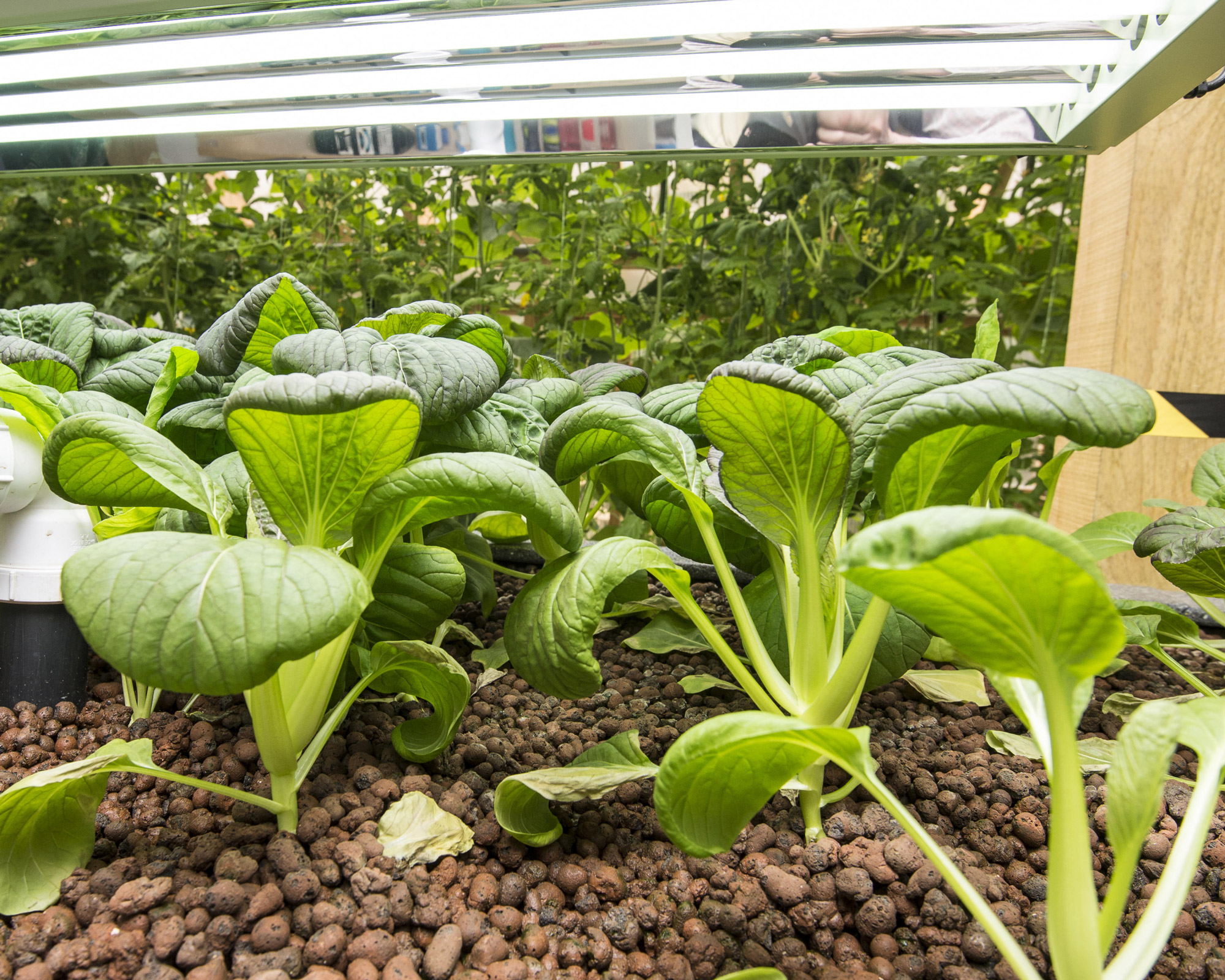
Can I grow pak choi in winter?
These hardy Asian vegetables are blessed with a long sowing and harvesting season. You aren’t restricted to a time window of a few weeks, dependent on a long list of rules.
The standard growing time for mature pak choi lies between mid spring and late summer, but you can push this even further if you are growing inside. So if you like growing lettuce in winter, here’s another option for fall sowings. Because it is possible (and desirable) to grow Chinese cabbage as fast-growing baby leaves and microgreens, you can sow these crops in colder months – as long as you regulate temperature, keep moist and harvest young.
Many of the same considerations apply as with growing indoors (see above), and you can utilize grow lights to maintain regulated exposure to light as well as temperature.
For the purposes of growing pak choi as microgreens and baby leaves, spacings don’t have to be quite as exact as with standard plantings – but keep an eye on them to ensure the plants have adequate space and ventilation, as well as plenty of moisture as they grow. Keep a close eye on your greenhouse, polytunnel, cloche or cold frame, and add extra protection with some fleece if necessary, and you’re all set.
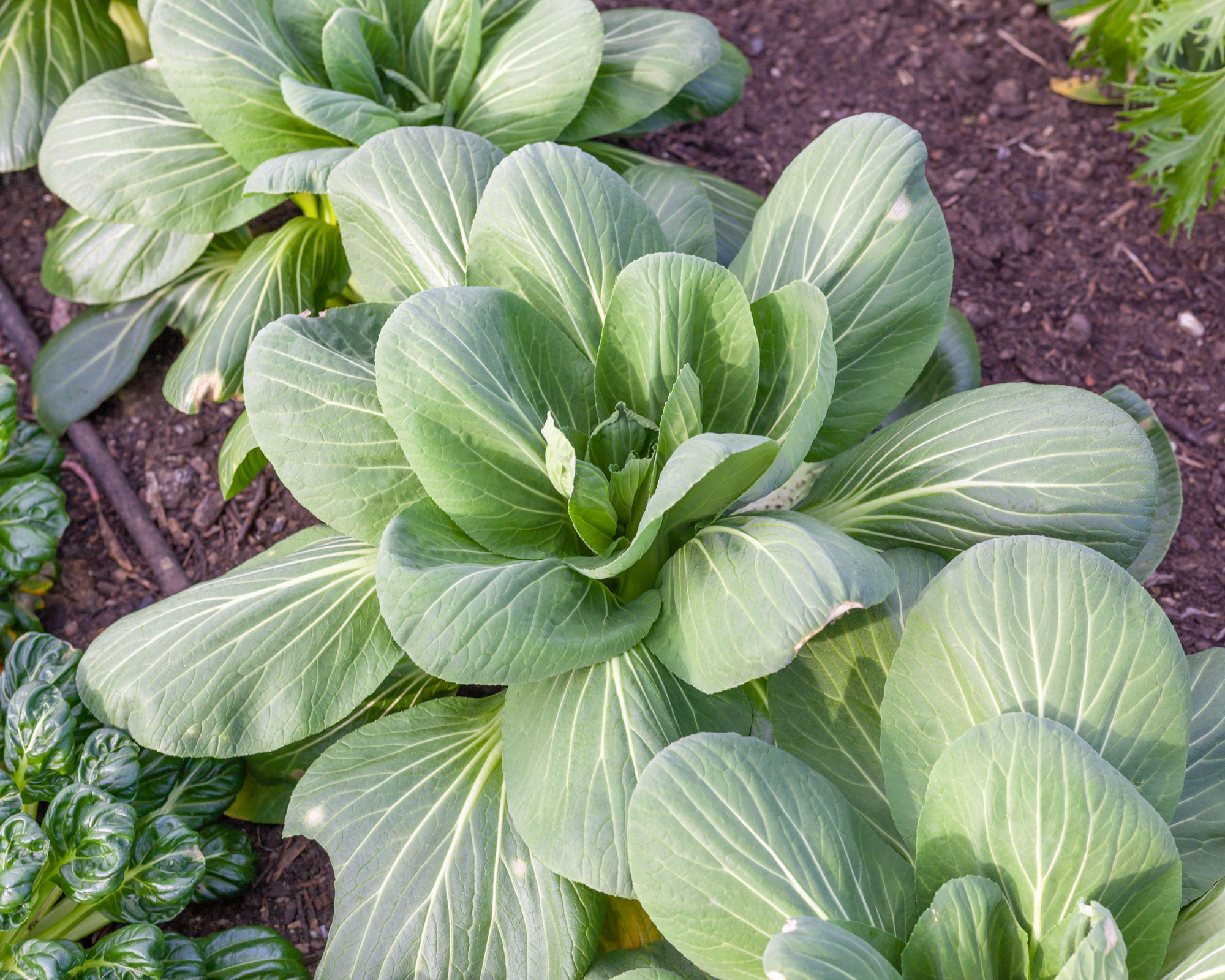
Is pak choi a cut and come again crop?
Enjoying multiple harvests is one of the many great things about pak choi. It’s not just about gathering the whole hearts of crowns of rosettes after six or eight weeks – you can collect the outer leaves of each crop after just a few weeks, eking more cropping potential from each plant.
And it doesn’t stop there, because knowing how to grow pak choi gives you a chance to enjoy repeat crops from the same plant thanks to regrowth. So if you harvest crops right, you can indeed enjoy crops that are ‘cut and come again’.
Pak choi will regenerate if cut in the right way. Just make your cuts about an inch (3cm) above the base and you should see regrowth. You can do this at any point from when the plants are 2-5in (5-13cm) high. Just check the seed packets for details of how individual breeds accommodate cut and come again harvesting needs.
As a rule, don’t remove more than a third-a half of the plant at a time. Both dwarf and standard varieties can be grown so two or three cuts are possible; bolt-resistant breeds like ‘China Choi’ and ‘Mei Qing Choi’ are recommended, but there are plenty of others.

Where to buy pak choi as seeds
When you learn how to grow pak choi from seed, you’ll find there is a huge breadth of options. You’ll find white (‘Win-Win Choi’ and ‘Ivory’), green (‘Green Revolution’ and ‘Baraku’) and red (‘Rubi’ and ‘Red Choi’) varieties. Plus, several types are renowned for bolt resistance (‘Blizzard’ and ‘Glacier’) and frost resistance (‘Joy Choi’). There’s a huge range available online, so use our quick links to start your pak choi planting journey.
Where to buy pak choi seeds in the US:
- Shop pak choi seeds at Amazon
- Shop pak choi seeds at Burpee
- Shop pak choi seeds at Home Depot
- Shop pak choi seeds at Johnny Seeds
- Shop pak choi seeds at Walmart
Where to buy pak choi seeds in the UK:

As assistant editor of Amateur Gardening magazine, Janey's gardening passion was fostered from an early age, when her amazing mum had her deadheading hydrangeas, mulching roses, and propagating strawberry plants from runners for school open days. She's also taken part in lots of conservation and rewilding projects for the RHS and TCV as a way of exploring her horticultural horizons.
